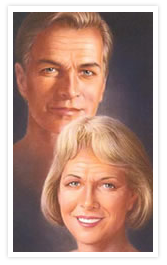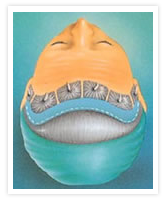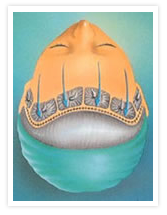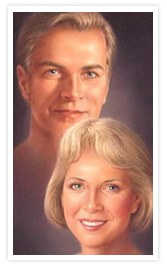Brow Lift Information
A forehead lift or “browlift” is a procedure that restores a more youthful, refreshed look to the area above the eyes. The procedure corrects drooping brows and improves the horizontal lines and furrows that can make a person appear angry, sad or tired.
In a forehead lift, the muscles and tissues that cause the furrowing or drooping are removed or altered to smooth the forehead, raise the eyebrows and minimize frown lines.
The Best Candidates for a Forehead Lift
A forehead lift is most commonly performed in the 40–60 age range to minimize the visible effects of aging. However, it can also help people of any age who have developed furrows or frown lines due to stress or muscle activity. Individuals with inherited conditions, such as a low, heavy brow or furrowed lines above the nose can achieve a more alert and refreshed look with this procedure.
Forehead lift is often performed in conjunction with a facelift to provide a smoother overall look to the face. Eyelid surgery (blepharoplasty) may also be performed at the same time as a forehead lift, especially if a patient has significant skin overhang in the upper eyelids.
All Surgery Carries Some Uncertainty and Risk
Complications are rare and usually minor when a forehead lift is performed by a qualified plastic surgeon. Yet, the possibility of complications must be considered.
In rare cases, the nerves that control eyebrow movement may be injured on one or both sides, resulting in a loss of ability to raise the eyebrows or wrinkle the forehead. Additional surgery may be required to correct the problem.
Formation of a broad scar is also a rare complication. This may be treated surgically by removing the wide scar tissue so a new, thinner scar may result. Also, in some patients, hair loss may occur along the scar edges.
Loss of sensation along or just beyond the incision line is common, especially with the classic forehead lift procedure. It is usually temporary, but may be permanent in some patients.
Planning Your Surgery
For a better understanding of how a forehead lift might change your appearance, look into a mirror and place the palms of your hands at the outer edges of your eyes, above your eyebrows. Gently draw the skin up to raise the brow and the forehead area. That is approximately what a forehead lift would do for you.
During your consultation, the surgeon will discuss your goals for the surgery and ask you about certain medical conditions that could cause problems during or after the procedure, such as uncontrolled high blood pressure, blood-clotting problems, or the tendency to develop large scars. Be sure to tell the surgeon if you have had previous facial surgery, if you smoke, or if you take any drugs or medications -- including aspirin or other drugs that affect clotting.
The Surgery
Your surgeon will help you decide which surgical approach will best achieve your cosmetic goals: the classic or “open”method, or the endoscopic forehead lift. Make sure you understand the technique that your surgeon recommends and why he or she feels it is best for you.
The classic forehead lift: Before the operation begins, your hair will be tied with rubber bands on either side of the incision line. Your head will not be shaved, but hair that is growing directly in front of the incision line may need to be trimmed.
For most patients, a coronal incision will be used. It follows a headphone-like pattern, starting at about ear level and running across the top of the forehead and down the other side of the head. The incision is usually made well behind the hairline so that the scar won’t be visible.
If your hairline is high or receding, the incision may be placed just at the hairline, to avoid adding even more height to the forehead. In patients who are bald or losing hair, a mid-scalp incision that follows the natural pattern of the skull bones is sometimes recommended.
The endoscopic forehead lift: Typically, an endoscopic forehead lift requires the same preparation steps as the traditional procedure: the hair is tied back and trimmed behind the hairline where the incisions will be made.
However, rather than making one long coronal incision, your surgeon will make three, four or five short scalp incisions, each less than an inch in length. An endoscope, which is a pencil-like camera device connected to a television monitor, is inserted through one of the incisions, allowing the surgeon to have a clear view of the muscles and tissues beneath the skin. Using another instrument inserted through a different incision, the forehead skin is lifted and the muscles and underlying tissues are removed or altered to produce a smoother appearance.
After Your Surgery
The immediate post-operative experience for a patient who has had a classic forehead lift may differ significantly from a patient who had the procedure performed endoscopically.
Classic forehead lift patients may experience some numbness and temporary discomfort around the incision, which can be controlled with prescription medication. Patients who are prone to headaches may be treated with an additional longer-acting local anesthesia during surgery as a preventive measure.
You may be told to keep your head elevated for two to three days following surgery to keep the swelling down. Swelling may also affect the cheeks and eyes-- however, this should begin to disappear in a week or so.
As the nerves heal, numbness on the top of your scalp may be replaced by itching. These sensations may take as long as six months to fully disappear. If bandages were used, they will be removed a day or two after surgery. Most stitches or clips will be removed within two weeks, sometimes in two stages.
Endoscopic forehead lift patients may experience some numbness, incision discomfort and mild swelling.
Incision site pain is usually minimal, but can be controlled with medication, if necessary. Endoscopic forehead lift patients usually experience less of the itching sensation felt by patients who have had the classic forehead lift.
Content courtesy of PlasticSurgery.org
Dr. Frank J. Piro offers all aspects of plastic surgery including surgery after massive weight loss, liposuction, rhinoplasty and breast augmentation. View plastic surgery photos in our photo gallery and tummy tuck photos, learn more about plastic surgery and schedule a consultation with this board certified plastic surgeon.
Northern California areas served: Bay Area - Peninsula - San Francisco - San Bruno - San Carlos - Belmont - Palo Alto - Mountain View - Hillsborough - Menlo Park - Burlingame - Foster City - Redwood Shores – Atherton
*required fields

A forehead lift can smooth the forehead, raise the upper eyelids, and minimize the frown lines that come with aging.

In preparation for a forehead lift, the hair is tied back with rubber bands in front of and behind the incision area. An incision is usually made across the top of the head, just behind the hairline.

Forehead skin is gently lifted and portions of facial muscle and excess skin are removed. The incision is then closed with stitches or clips.

The result of a forehead lift is a younger, more rested look.